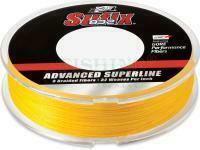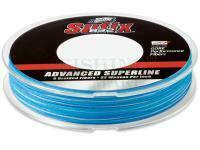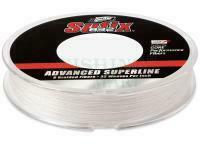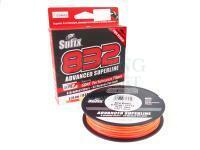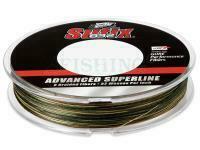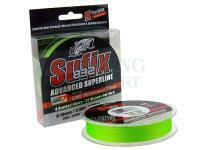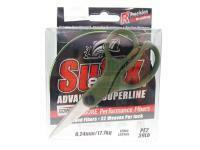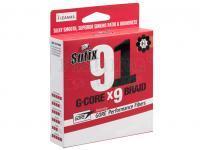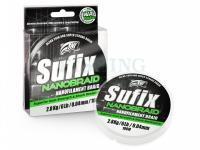Braided fishing lines - braid for spinning
Sufix X8 Braid Neon Chartreuse
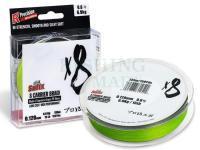
• Round and smooth braided line
• 8 carriers construction o...
Prices from
18.57 €
Sufix Braided lines SFX 4 Carrier Braid
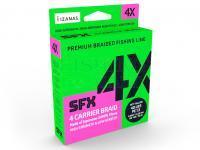
Made of Japanese UHMPE Fibers High Strength & Low Stretch. A...
Prices from
15.48 €
Sufix Braided lines X8 Braid Coastal Camo
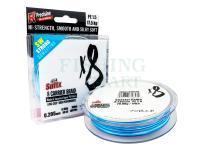
• Round and smooth braided line
• 8 carriers construction o...
Prices from
18.33 €
Sufix Rapinova-X8 braided lines
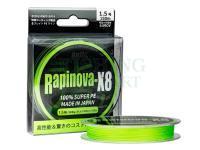
• The Rapinova is a high end quality 8 UHMPE carriers braide...
Prices from
25.48 €
Sufix Braided lines X8 Braid Hot Yellow
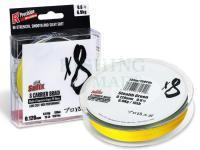
• Round and smooth braided line
• 8 carriers construction o...
Prices from
16.43 €
Sufix X8 Braid Stealth Green
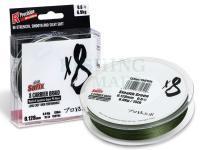
• Round and smooth braided line
• 8 carriers construction o...
Prices from
17.62 €
Sufix 131 G-Core Braid Neon Chartreuse
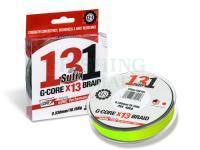
The most reliable superline. Unmatched strength consistency....
Prices from
38.10 €
Sufix 131 G-Core Braid Lo-Vis Green braids
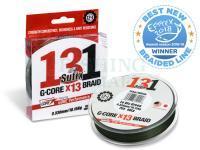
The most reliable superline. Unmatched strength consistency....
Prices from
38.10 €
Sufix 832 Advanced Superline Braids - Low vis green
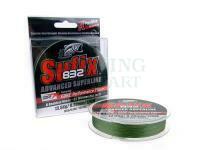
The strongest, most durable small diameter braid.
Feature...
Prices from
19.05 €
Braided fishing lines - braid for lure fishing
Braided fishing line is an invention as old as fishing. It is made of several braided fibres. Initially, natural fibres were used, such as linen or cotton. Over time, natural materials gave way to those more technologically advanced, namely high-modulus polyethylene (Spectra, Dyneema) or Dacron. Their marketing led to a real revolution on the braided lines market. Nowadays, fishing braids are used for almost all types of spinning – from the ultra-light version to the real big game. Many anglers cannot imagine fishing without braided lines.
The most important difference in utilising this type of line is its linear and knot strength, which are impossible to achieve by traditional nylon fishing lines. So much so, that by using a braided fishing line as the mainline, you can buy a product even three times thinner than the dedicated fishing line! What are the benefits? It will make casting easier and improve your contact with the lure.
Another very important difference between braided and monofilament fishing lines is the lack of stretch (which can be over 30% in the latter case!). This feature not only allows you to feel both the take and the action of the lure, but also to quickly strike the fish. The pulling itself is almost synonymous with the phrase “contact with the fish”. Thanks to the lack of stretch, braided fishing lines are a great choice for technically difficult fishing grounds, abundant in vegetation and snags which impel us to pull forcefully.
Interestingly, high strength and zero stretch does not necessarily mean that the fishing braids itself is stiff. Modern manufacturers offer both stiff (often coated) and extremely soft lines. The same goes for roughness. Spinning braids are available in variants with a different number of strands, ranging from 4 to as many as 13. Thus, a product made of four strands will create the most noise, but it will also be the most abrasion-resistant. A twelve-strand line will give us a cross-section closest to a round one. It’s often smooth, but its resistance to mechanical damage will be slightly reduced.
Such lines come in various colours, from more discreet, barely visible, green, through striking fluo colours to even multi-coloured, rainbow colours, thanks to which the observation of a bite is even easier, regardless of the weather conditions.
Interestingly, a braided line is not perfectly round in cross-section, therefore it fits on the spool much worse than a traditional line. Also, some models can absorb water and swell as a result. Therefore, when choosing a fishing braid for your reel, we advise you not to rely on the spool capacity specified by the manufacturer, since in most cases it applies to a monofilament line.
We recommend that you acquire extremely sharp scissors for cutting braided fishing lines, which will not tear the braid and will be more efficient than traditional line clippers.
The most important difference in utilising this type of line is its linear and knot strength, which are impossible to achieve by traditional nylon fishing lines. So much so, that by using a braided fishing line as the mainline, you can buy a product even three times thinner than the dedicated fishing line! What are the benefits? It will make casting easier and improve your contact with the lure.
Another very important difference between braided and monofilament fishing lines is the lack of stretch (which can be over 30% in the latter case!). This feature not only allows you to feel both the take and the action of the lure, but also to quickly strike the fish. The pulling itself is almost synonymous with the phrase “contact with the fish”. Thanks to the lack of stretch, braided fishing lines are a great choice for technically difficult fishing grounds, abundant in vegetation and snags which impel us to pull forcefully.
Interestingly, high strength and zero stretch does not necessarily mean that the fishing braids itself is stiff. Modern manufacturers offer both stiff (often coated) and extremely soft lines. The same goes for roughness. Spinning braids are available in variants with a different number of strands, ranging from 4 to as many as 13. Thus, a product made of four strands will create the most noise, but it will also be the most abrasion-resistant. A twelve-strand line will give us a cross-section closest to a round one. It’s often smooth, but its resistance to mechanical damage will be slightly reduced.
Such lines come in various colours, from more discreet, barely visible, green, through striking fluo colours to even multi-coloured, rainbow colours, thanks to which the observation of a bite is even easier, regardless of the weather conditions.
Interestingly, a braided line is not perfectly round in cross-section, therefore it fits on the spool much worse than a traditional line. Also, some models can absorb water and swell as a result. Therefore, when choosing a fishing braid for your reel, we advise you not to rely on the spool capacity specified by the manufacturer, since in most cases it applies to a monofilament line.
We recommend that you acquire extremely sharp scissors for cutting braided fishing lines, which will not tear the braid and will be more efficient than traditional line clippers.

